#Sweetwood Creative
Explore tagged Tumblr posts
Text
Randomly recommended podcasts!
I love podcasts, but I don't get to listen to them as frequently as I wish.
There are some really amazing ones out there I learn so much from, and others are very entertaining. I thought I'd share some of my favorites with y'all. Not all of these are current shows. In fact, some haven't added a new episode in over a year. But I myself may have only just recently discovered the show and therefore it's new to me.
I'll break this up into different parts due to Tumblr's photo limitations. I have no idea if these podcasts are available everywhere, but I subscribe to them via Google Podcasts.
Part 1: Creativity, Imagination, Neuroscience
:readmore:
Imagination Radio
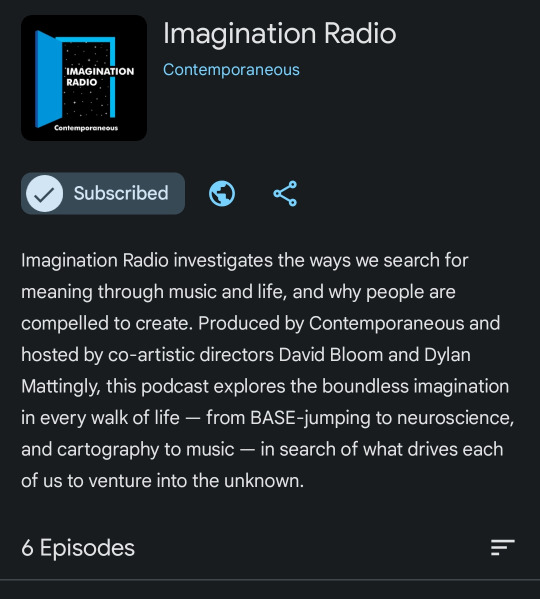
Scientific Imagination

Parallel Lives
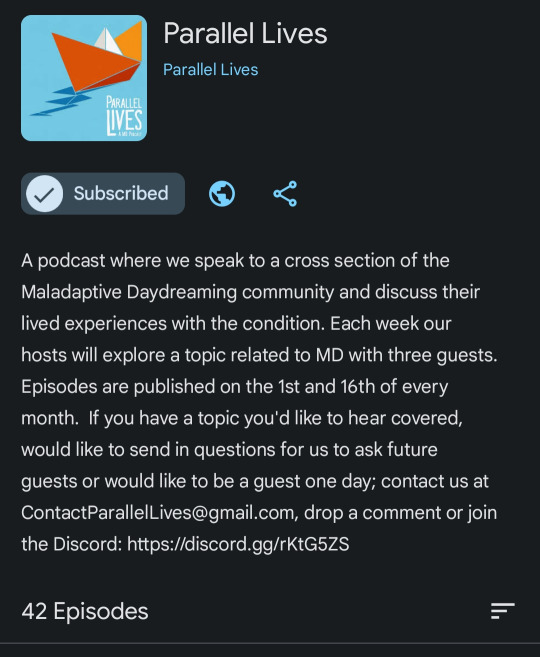
All in the Mind
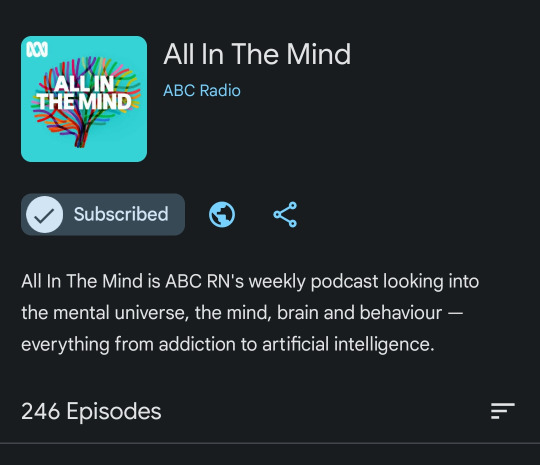
Creativity in Captivity
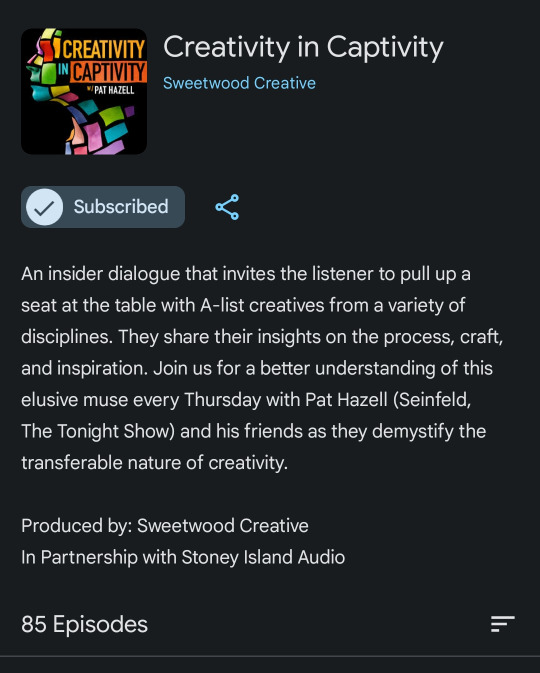
Into the Impossible with Brian Keating

Imagination Desk

Creative Chats Podcast
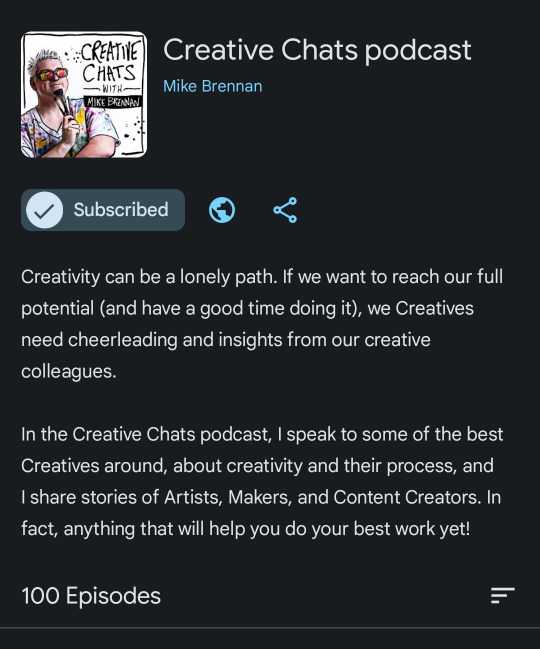
Creative Pep Talk
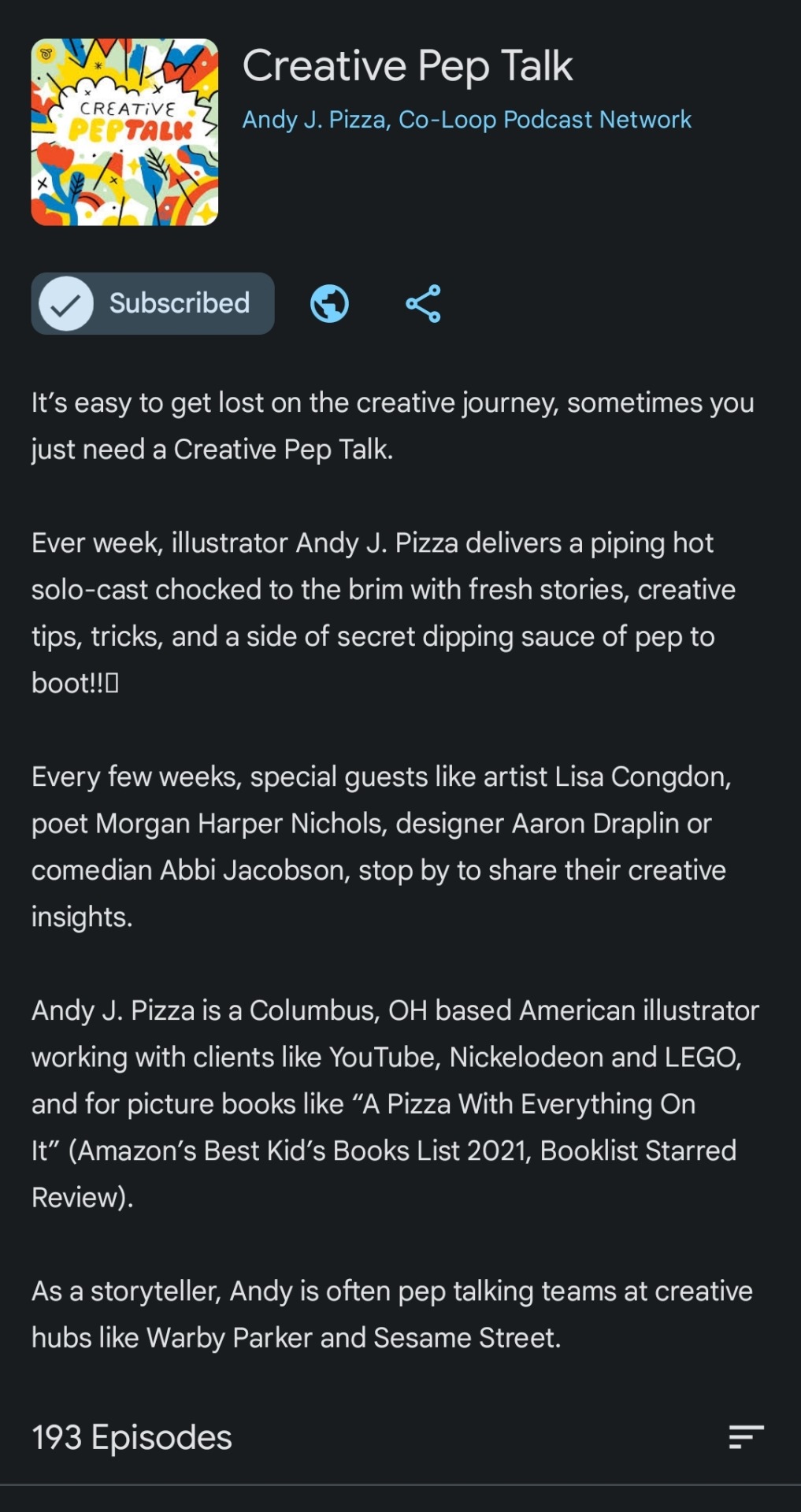
Hidden Brain
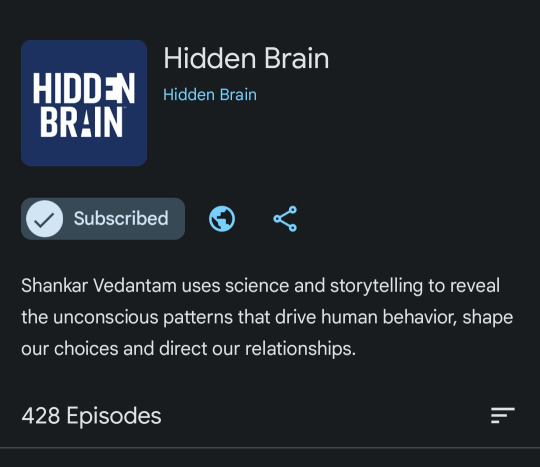
#podcasts katriniac likes#podcasts#Imagination Radio#Scientific Imagination#Parallel Lives#maladaptive daydreaming#contemporaneous#ABC Radio#Sabine Winters#All in the Mind#Creativity in Captivity#Sweetwood Creative#Into the Impossible with Brian Keating#The Imagination Desk#Center for science and imagination#Creative Chats Podcast#Mike Brennan#arthur c clarke center for human imagination#Creative Pep Talk#Hidden Brain#google podcasts
13 notes
·
View notes
Text
Sweetwood Creative CCO and Creativity In Captivity Podcast Host Pat Hazell.
Showtime declared Pat Hazell one of the five funniest people in America. His 25 years of experience as a writer, producer and director have made him a go-to guy for new American theater. Pat is one of the original writers for NBC’s Seinfeld, a Tonight Show veteran, a critically acclaimed playwright and a contributing commentator to National Public Radio. He is recognized for his genuinely funny…
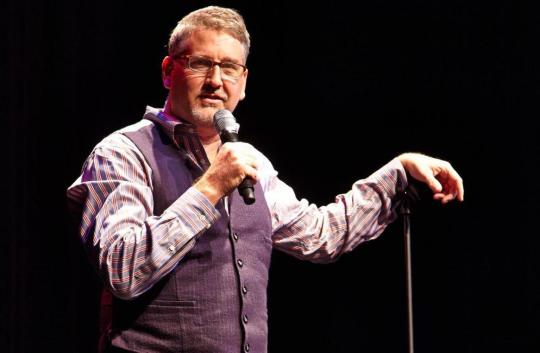
View On WordPress
#ad agency#Bunk Bed Brothers#Commercial Directing Bootcamp#commercials#creative#directing.#Filmmaker Retreat Joshua Tree#filmmaking#masterclass#Pat Hazell#Permanent Record#Sweetwater Creative
0 notes
Photo

Rustic & Manly 40th Celebration Sweetwood Creative Co. | Atlanta Wedding Planner + Upscale Event Design https://craft.360decorations.com/food/rustic-manly-40th-celebration-sweetwood-creative-co-atlanta-wedding-planner-upscale-event-design/
0 notes
Text
Building an Analytical Marketing Framework
In transitioning from a traditional marketing structure to an analytical one, Adele Sweetwood, SVP of Global Marketing and Shared Services, at SAS found that there wasn’t guidance readily available. So, she and her team built their own
One of the primary reasons I wrote The Analytical Marketer was because I couldn’t find any content that talked about what we were trying to accomplish in marketing at SAS.
As a team that markets analytical software, we knew we needed to be more purposeful in our approach to marketing campaigns so that we could improve the customer experience and optimize our results.
To better inform and provide guidance to customers and prospects, you need to use your customer data (the right elements) to full effect. Rather than just using the same third-party data used by your competitors, you need to create unique analytical insight about your customers and prospects based on what they are researching on your website, their social media interactions and more – and tailor your interactions accordingly.
Customers expect us to know what they want. They are more informed, engaged, and more in control than ever before, especially when it comes to how they want us to market to and communicate with them.
Personalization, a customer’s digital footprint, and our respect for customer privacy has put new requirements on marketing. Meeting these requirements underscores the value of the data and the power of analytics in interpreting the needs of the customers. It continues to change the way marketers design and implement campaigns, promotions, or advocacy programs. It becomes the driving force behind an analytical marketing framework.
The modern marketer must be analytical
There is an always-on world happening around us, generating enormous volumes of data and an increasing number of channels (digital, social, etc.). Analytics (not just numbers in a collection of spreadsheets) must be part of your survival kit. There is a new type of marketer – the analytical marketer, who effectively blends what is traditionally the creative side of marketing with the scientific side – enhancing the outcome.
These kinds of changes are painful. People tend to focus on past experiences and their area of expertise to the exclusion of everything else. You have to ask them to look at the bigger picture. In short, you need a more unified approach to how you think about everything – from campaigns to how you handle inbound inquiries from prospects.
And, along with the organizational/people evolution, you need a structured, analytical approach to both strategic and tactical decisions about how you implement campaigns and how you modify campaigns once the data started rolling in and you see opportunities for improving results.
The right approach for SAS was a ground up renovation to better integrate channels and create a new customer-centric view of the market. We needed a way to monitor all of the campaigns in a centralized fashion. This meant creating unified experiences across all channels to deliver to customers the personalized attention they are asking for. And we started by establishing an Analytical Marketing Functional Framework that would serve as the foundational structure.
This framework enables us to:
Align investment strategies.
Create more consistent messaging, content, and creative assets.
Define rules for publishing.
Develop and monitor consistent performance metrics.
Encourage, regular, continual internal communication.
Align performance objectives across teams; identifying and connecting inter-dependencies.
From siloed services to shared services
We developed this framework using an iterative approach to organizational design, and we landed quietly happily on the two-fold framework we use today – a sharing-of-services approach and a go-to-market approach. It’s our global framework for organizing and integrating marketing resources.
We defined marketing shared services as those teams that could operate most effectively in a more centralized way. We also combined complimentary channels into these teams when we recognized natural affinities.
Here’s an example of what I’m talking about. We needed convergence in the area of content marketing. Content has become such a critical part of marketing these days. But, more than ever, it needs to be relevant and accessible in many different forms and for many different platforms – mobile, video, web, e-books, etc. It’s nearly enough anymore to put white papers on your site for customers to download.
The challenge is making sure there is coordination across the organization when it comes to creating or acquiring content. We found was that we had different channels investing time and money on developing content, for example hiring a third-party to write a research paper, when another department channel already had a similar paper sitting in their content repository.
We were continually reinventing the wheel. And wasting plenty of money doing it! All because we weren’t coordinating our efforts, or even talking to each other.
“We were the worst offenders of creating random acts of content,” Barbara Anthony, director of our content marketing team said.
The content marketer’s job is to spot content gaps and help ensure we are offering the kind of relevant content our customers are looking for. They’re always looking for ways to use, reuse and repurpose our best quality content so that a piece of content puts it best foot forward as it gets used across different channels.
In this way, the framework encompasses both a centralized approach (shared services) and a decentralized approach (GTM teams) for marketing functions, with the customer focus at the center.
Get better customer engagement with a go-to-market strategy
The other side of the framework is the go-to-market (GTM) structure are where marketing plans come to life fed by our messaging and directed by our customer analytics. We have created these GTM market teams for our key corporate sales and marketing initiatives.
There are two focus areas for GTM plans:
Revenue and growth marketing where the focus is on creating demand and add quality, qualified leads in the marketing pipeline. We measure the success of our marketing efforts on the impact we have on building pipeline, driving revenue, and influencing software renewals. Our metrics include many of the traditional marketing assessments, but with a clear focus on how we are affecting pipeline revenue.
Retention and loyalty marketing is how we nurture our existing customers and includes our user group and communities as well as our education practice marketing and academic outreach.
Using a customer’s data, we are able to recognize their digital footprint and by following it, we’re able to map the customer journey of that person or that company no matter which channel we next find them using. The result is more precise targeting, better segmentation, and we now have a way to more accurately score campaign performance.
The GTM approach is designed to align efforts globally. A foundational GTM plan may have a baseline set of components designed, for example, by the US, but then it is customized at a regional level. GTM teams globally engage in a unified effort with the objective of jointly designing and enhancing go-to-market efforts.
Is the GTM approach working? I believe so. Here’s just one example, due to the efforts across the organization and not only the GTM plans, we’ve seem web traffic and web conversions increase significantly in the past year. It’s now just the right web experience – high touch and high value.
Another validation point is in our ability to look at a critical functional area such as marketing sciences, and observe that a highly effective and efficient global function being optimized at a local, regional, and global level, which translates into optimized resources and decreased redundancy.
The beauty of establishing the analytical marketing framework is that it truly is a “framework”, which means it can scale and flex because is ever really ‘one size fits all’. For us, there are consistent components and an overall consistent design, but there are nuances at the regional level, depending on market, resources, demand, etc. The pieces and parts of a framework can and will change. It will become clear which elements have the most impact and where you can gain the most return.
This article was first appeared on MarTech Advisor
0 notes
Text
Sweetwood Creative CCO and Creativity In Captivity Podcast Host Pat Hazel.
Showtime declared Pat Hazell one of the five funniest people in America. His 25 years of experience as a writer, producer and director have made him a go-to guy for new American theater. Pat is one of the original writers for NBC’s Seinfeld, a Tonight Show veteran, a critically acclaimed playwright and a contributing commentator to National Public Radio. He is recognized for his genuinely funny Americana humor and his salute to nostalgia.
His podcast "Creatvity In Captivity" he interviews the top creative people on the planet, from every discipline. (I'm on Season 4, episode 15, btw.)
Pat's new show "Permanent Record" opens in Marshall, Texas at Memorial Hall. Click here and make the trip, Texans!
As the Chief Creative Officer of Sweetwood Creative, he is responsible for the national tours of five original productions: Bunk Bed Brothers, Nashville Backstage, The Wonder Bread Years, My Funny Valentine and A Kodachrome Christmas. Pat is currently collaborating on a musical adaptation of his original play Grounded For Life. However, his greatest accomplishment is being the father of two of the brightest shining stars in the universe, Tucker and Keaton.
EVENTS & COURSES
My next Commercial Directing Bootcamp is April 22nd, 2023 in Los Angeles is SOLD OUT. Emaill me to be on the waistlist. Check out my Masterclass or Commercial Directing Shadow online courses. (Note this link to the Shadow course is the one I mention in the show.) All my courses come with a free 1:1 mentorship call with yours truly. Taking the Shadow course is the only way to win a chance to shadow me on a real shoot! DM for details.
So excited for our Second Annual Filmmaker Retreat in Joshua Tree. Join us Sept. 28th to Oct. 1st in the desert for a transformational experience. "Define Your Voice is our theme and you'll emerge knowing what you want and how better to achieve it.
How To Pitch Ad Agencies and Director’s Treatments Unmasked are now bundled together with a free filmmaker consultation call, just like my other courses. Serious about making spots? The Commercial Director Mega Bundle for serious one-on-one mentoring and career growth.
Amazon Prime!! Jeannette Godoy’s hilarious romcom “Diamond In The Rough” streams on the Amazon Prime! Please support my wife filmmaker Jeannette Godoy’s romcom debut. It’s “Mean Girls” meets “Happy Gilmore” and crowds love it. Here’s the trailer.
Thanks,
Jordan
This episode is 85 minutes.
My cult classic mockumentary, “Dill Scallion” is online so I’m giving 100% of the money to St. Jude Children’s Hospital. I’ve decided to donate the LIFETIME earnings every December, so the the donation will grow and grow. Thank you.
Respect The Process podcast is brought to you by True Gentleman Industries, Inc. in partnership with Brady Oil Entertainment, Inc.
Check out this episode!
0 notes
Link
via Party Eventofy : Event Theming Ideas You Can Truly Pull Off
0 notes
Link
via Party Eventofy : Event Theming Ideas You Can Truly Pull Off
0 notes
Text
How to Build an All-star Analytical Marketing Team
Analytical marketing is equal parts science and art; decisions driven by data and empowered by smart marketers. Adele Sweetwood, SVP of Global Marketing and Shared Services, SAS explains how assembling an all-star team is a critical step to making analytical marketing work for your organization
Okay. You have the strategy, technology, and organizational buy-in to provide your marketing team the very best resources and support. Now, you need to make sure your team has the skills and expertise needed to fully implement your vision of a modern marketing team.
Before we began retooling our global marketing team at SAS, we took an important and necessary first step to establish a framework which guides how we presented ourselves to the market. And that, in turn, helped better define our marketing staffing requirements. We call this our “go-to-market” framework. This framework aligns with our corporate initiatives and includes:
Revenue and growth marketing
Retention and loyalty marketing
Regional or business unit go-to-market requirements
This change in how we implement our marketing also changed our view of team roles. In the past, we expected a marketer to be an expert in every aspect of campaign implementation and management including social media strategy, content creation, lead generation and event preparation. We believed that they needed to know everything about the product or solution they were building a campaign around.
Good marketing, like good music, is better with a conductor
You can see the problem with that approach. Given the complexities and variability involved with all the different channels we were expected to maintain; it didn’t make sense for our marketers to be good at everything. Instead, we decided our go-to market leaders should be more like the conductor of an orchestra. This orchestration role requires someone who understands the various skills and expertise of the team members around them and know when to pull them in at the moments they’re needed to make the campaign a success.
The concept of the orchestrator evolved from the idea that it would be great to have someone who had a view of the entire organization and who could help connect the dots. An orchestrator on a go-to-market team needs access to channel- and product-specific experts from within the organization to help build campaign. Orchestrators also needs to access other resources like our external communications and public relations teams as well as our corporate creative team, which serves as our in-house creative resource.
In a digital marketing department you need specialists and someone to bring them all together. The marketer will know their topic well, but they are also at the center of bringing in the right people to build the best go-to market program.
As our functional needs changed, so have roles and job descriptions. A focus on data science combined with the proliferation of new channels has radically changed some traditional marketing jobs and has led to the creation of new roles. These changes are an evolution from marketing as art to a hybrid of art and science. As part of this evolutionary process, we’ve created four job categories.
Digital marketer: Using data to optimize outcomes no matter the channel
Digital marketing includes web, search, social, email, and digital advertising and media buying. These functional areas have been going through tremendous growth and change over the past decade as the number of channels have exploded. Every organization’s reaction has been pretty much the same – add channel specialists who would learn every nuance of how that channel operated.
There continues to be a need for skillsets that are deep and focused, but you also need people who can connect those skills with a broader strategic view the organization’s goals. You can’t have someone be so focused on their one social channel that they don’t recognize that they are cannibalizing another channel at the same time. We are looking for people who have commanding expertise on a channel while clearly understanding how that channel intersects with other channels.
The vital ingredient for this digital marketing approach is data. One of our marketers likened the data wrangling he does to being a police detective uncovering the truth. And that’s what we expect our marketers to do; use readily available data to enhance campaign performance or even to end a campaign when the analysis shows that the results don’t justify the cost.
Content marketer: Identifying the best content for every stage of the customer journey
Content is now the currency of marketing. You can attach a cost to its creation and a value to the results it garners. Everything we do involves some form of content and that content is all over the place – literally and figuratively. But the content has to be channel appropriate – meaning that the format, length, and relevancy must fit that channel. You cannot offer a 20-minute video in a display ad. Well, you can, but no one will watch it.
The content marketer’s job is to spot content gaps and help ensure we are offering the kind of relevant content our customers are looking for. The content marketer is always looking for ways to use, reuse and repurpose our best quality content so that a piece of content puts it best foot forward as it gets used across different channels.
That means our content marketers need to have a very good understanding of all of our channels, how they function, and how they complement each other. They also need to assess what content types works at different stages of the customer journey: when do customers prefer white papers, videos, or a book? Content marketers need to be analytically-driven and behave as consultants on marketing campaigns to provide top-rated content for multiple channels.
Marketing scientist: Telling stories with data to enhance campaign effectiveness
A new job title you might have noticed cropping up is marketing data scientist. On our team, we’re still defining the roles and responsibilities that fall under that umbrella term. For now, SAS has two roles:
Data visualization analyst (also sometimes referred to as data artist or data storyteller). These are the people that use diverse data sources and the latest tools for data visualization to help shape new campaigns or provide recommendations to faltering ones. Their job is to look at the data objectively and illustrate for the team what stories the data is telling and, most importantly, without being tainted or biased by what a campaign manager might want to see. Marketing data scientists are also able to report what happens when we make changes and tweaks.
Segmentation analyst. If you need help building a contact list that targets the most receptive audience, the segmentation analyst is your go-to person. A segmentation analyst relies on scoring models to determine the key factors in a contact database that might make that person a good target for the campaign. They also track results of the campaign and offer advice about how to optimize the outcome.
Customer experience experts: Answering questions and building relationships
Outbound marketing is not our team’s sole focus. We place an equal emphasis on inbound marketing because in the modern customer decision journey, outbound and inbound are inextricably connected. Customer engagement specialists are what we call the people tasked with creating more meaningful conversations with customers and potential customers to reach out to us with questions.
A major change we’ve made is rethinking the talent and skills we need at our customer contact center. That contact center is itself an evolutionary advancement from the traditional call center because we now respond in many more ways than answering a telephone.
Analytics plays a role here, too, in providing the customer engagement specialists with distilled information in real time about customers, without drowning them in data. And these customer interactions, hundreds each day, provide us with massive volume of online chat transcripts which we analyze using text analytics for sentiment analysis. The customer engagement specialists can use the sentiment analysis better identify emerging issues and have an opportunity to turn what could have been a negative interaction into a more positive one. We call it relationship marketing.
Our result is a pitch perfect team
Our goal is to hire marketers who have a passion for and understand the value of data and analytics in decision making. Since implementing this team structure it has struck a chord with individual marketers who enjoy learning and growing within their specialty. Its boosted creativity and innovation, not killed it.
This article was first appeared on MarTech Advisor
0 notes